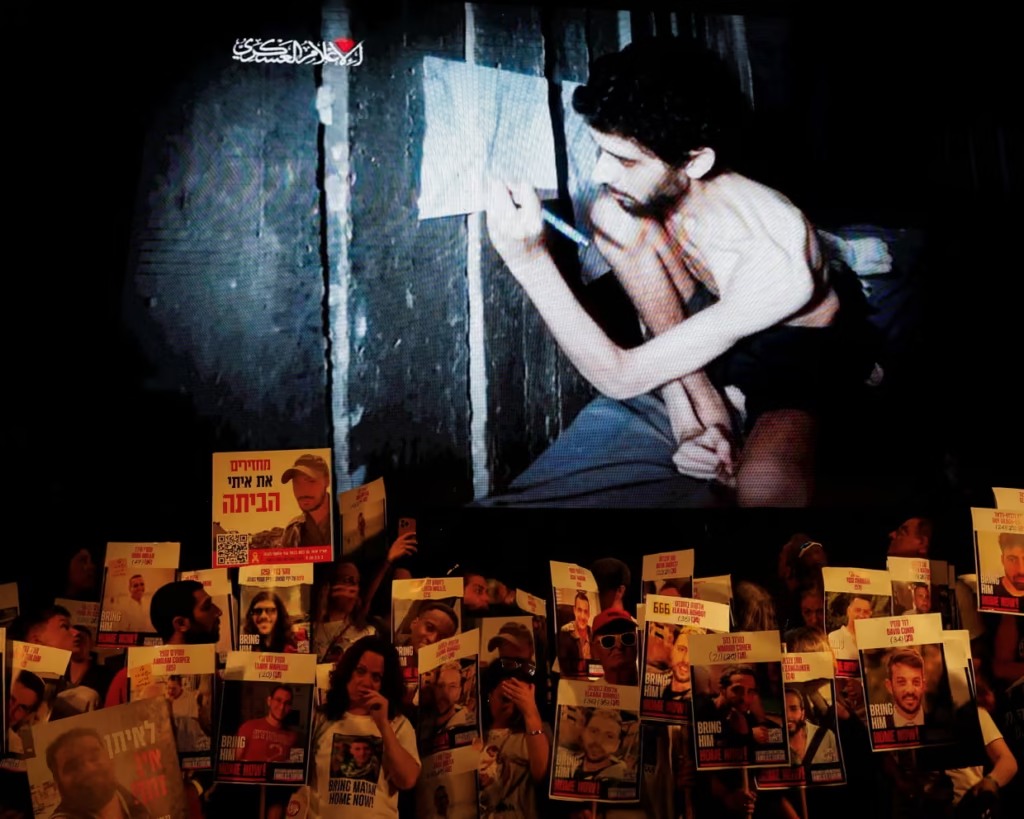Three Pictures, One False Narrative
Share this content:

How propaganda turned isolated cases into a global scandal
Since late 2023, international organisations and media have pushed a famine narrative about Gaza. They claim starvation is widespread. They claim hundreds have died. The facts tell a different story.
The UN’s own April data refutes famine claims
Between 13 and 26 April 2025, UN OCHA reported 5,500 aid truckloads entered Gaza, including 2,800 carrying food. This was enough to feed the population for six to eight months. Screening of 4,000 children under five found only a 3 % acute malnutrition rate—consistent with pre‑war levels. Only 0.5 % showed oedema. These figures contradict any claim of mass starvation.
Source
Markets and restaurants are still operating
Markets remained open and restaurants served food despite high prices and limited stock. That shows supply existed. Distribution may have clogged. But famine requires systemic deprivation.
Death figures come from Hamas and are unverified
Reports of starvation deaths originate from the Hamas-run health authority. No independent verification from UN or WHO exists. Aid workers have restricted access, especially in northern Gaza.
UN and NGOs claimed famine from the start
Even during April, when data showed adequate food and low malnutrition, UN agencies issued famine warnings. Media repeated those claims without noting the contradictions. The narrative spread before evidence supported it.
The population of Gaza has increased
A real famine would cause population decline. Birth rates remained high. There is no civil registry data showing mass mortality due to hunger. Even Hamas has not produced proof of widespread depopulation.
Food insecurity is real, but caused by Hamas
Aid shipments entered Gaza. But many were diverted, sold on black markets, or withheld by Hamas. This theft created scarcity for civilians. That explains hunger where supply existed.
The widespread photos of starving children are propaganda
One widely circulated image showed 18‑month‑old Muhammad Zakariya Ayyoub al‑Matouq. Major media outlets chose this photo to symbolise famine despite having access to other images of the same family showing Muhammad’s older brother looking healthy. This selective use of imagery is clearly disingenuous and was used to push a starvation narrative aimed at a gullible Western audience.
Source

If famine were truly widespread, Hamas would have no difficulty producing clear photographic evidence. Instead, it repeatedly circulates selective images of children with unrelated medical conditions. This lack of genuine, verifiable images strongly suggests that widespread starvation is not happening. The reliance on disingenuous photos shows Hamas does not possess real images of starvation victims, which it would undoubtedly use if available.
Conclusion: This is a propaganda war

The famine narrative is not backed by the available data. UN agencies continued to push it despite contradictory figures. Media relied on unverified claims. Aid diversion played a central role in any food insecurity. Selective images such as Muhammad’s were used to support a false narrative.
Meanwhile, the media ignores the deliberate starvation of Hamas’ hostages. For example, a Guardian article reported on Israeli hostage Evyatar David’s family accusing Hamas of starving him. But the headline weakened the charge with cautious phrasing: “Family of Israeli hostage held in Gaza accuses Hamas of starving him.” The piece closed with unchallenged Hamas propaganda, claiming that 60,500 Palestinians had been killed by Israel.
Source
These are facts, not agendas.







Post Comment